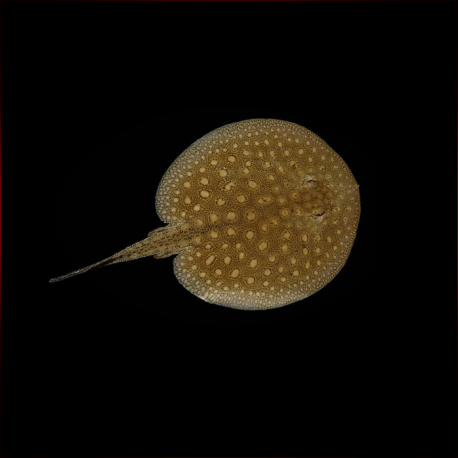More info
Datasheet
| Minimum Tank Size | 850 litres / 224.55 US gallons |
| Maximum Size | 45.7cm / 17.99inches |
| Temperature | 24°C / 75.20°F - 26°C / 78.80°F |
| Hardness | 4-10ºdH |
| pH | 6.0-7.0 |
Behaviour
Rays are top predators in their natural ecosystems, often incompatible with many other species due to their predatory nature. They thrive in quiet environments and may not do well with aggressive or territorial tankmates. Suitable companions include large, peaceful fish that occupy upper tank levels like certain cichlids, characins, cyprinids, arowana, Cichla, Datnioides, bichirs, or Pimelodid catfish. Negatively, some ray keepers suggest discus as tankmates, but smaller fish risk being preyed upon. When multiple Potamotrygon species coexist, there’s a risk of hybridization. The so-called "bat" or "batman" rays, with genetic defects, have gained popularity recently. These rays have missing portions in their discs, resembling the superhero symbol.
Feeding and Diet
Rays in the wild primarily feed on fish, aquatic invertebrates, worms, and crustaceans. With high metabolic rates, they need feeding at least twice daily, preferring an exclusively meaty diet. Juveniles enjoy live or frozen foods like bloodworms, Tubifex, Artemia, and krill, while adults require larger foods such as mussels, prawns, and fresh fish. It's crucial to get newly imported rays feeding quickly, starting with live foods before transitioning to dead alternatives. Avoid feeding them mammal meats like beef heart or chicken, as these can lead to health issues. Additionally, using feeder fish can introduce diseases or parasites.
Reproduction & Dimorphism
Potamotrygon rays practice matrotrophic viviparity, where pups develop inside the mother and are born live. Successful captive breeding has been noted, with gestation durations potentially shorter in aquarium settings. Mating can be violent, making pair selection crucial. Males have claspers for mating, visibly distinguishing them from females. Mating involves the male inseminating the female internally, leading to the birth of 1-8 fully-formed pups.
Habitat and Distribution
Potamotrygon Scobina is native to the middle and lower Amazon basin in Brazil, specifically in rivers like Rio Trombetas, Rio Tocantins, and Rio Pará. Inhabitants of various biotopes, these rays prefer sandbanks, shallow river areas with mud or sand substrates, and flooded forests during the wet season. They tend to shift to terrestrial lakes and ponds post-flood.
Aquarium Setup
Rays do not require elaborate tank decorations, but items like bogwood, branches, or rocks can be added if secured in place. Substrate choice varies from sand to gravel, with some opting for no substrate to aid maintenance. Efficient filtration, with sump-type systems or external canister filters, is crucial. Water parameters should reflect a pH of 6.0-7.0, hardness of 4-10°dH, and a temperature of 24-26°C for optimal ray health. Regular water changes and a secure tank cover are essential for maintaining a ray habitat.

